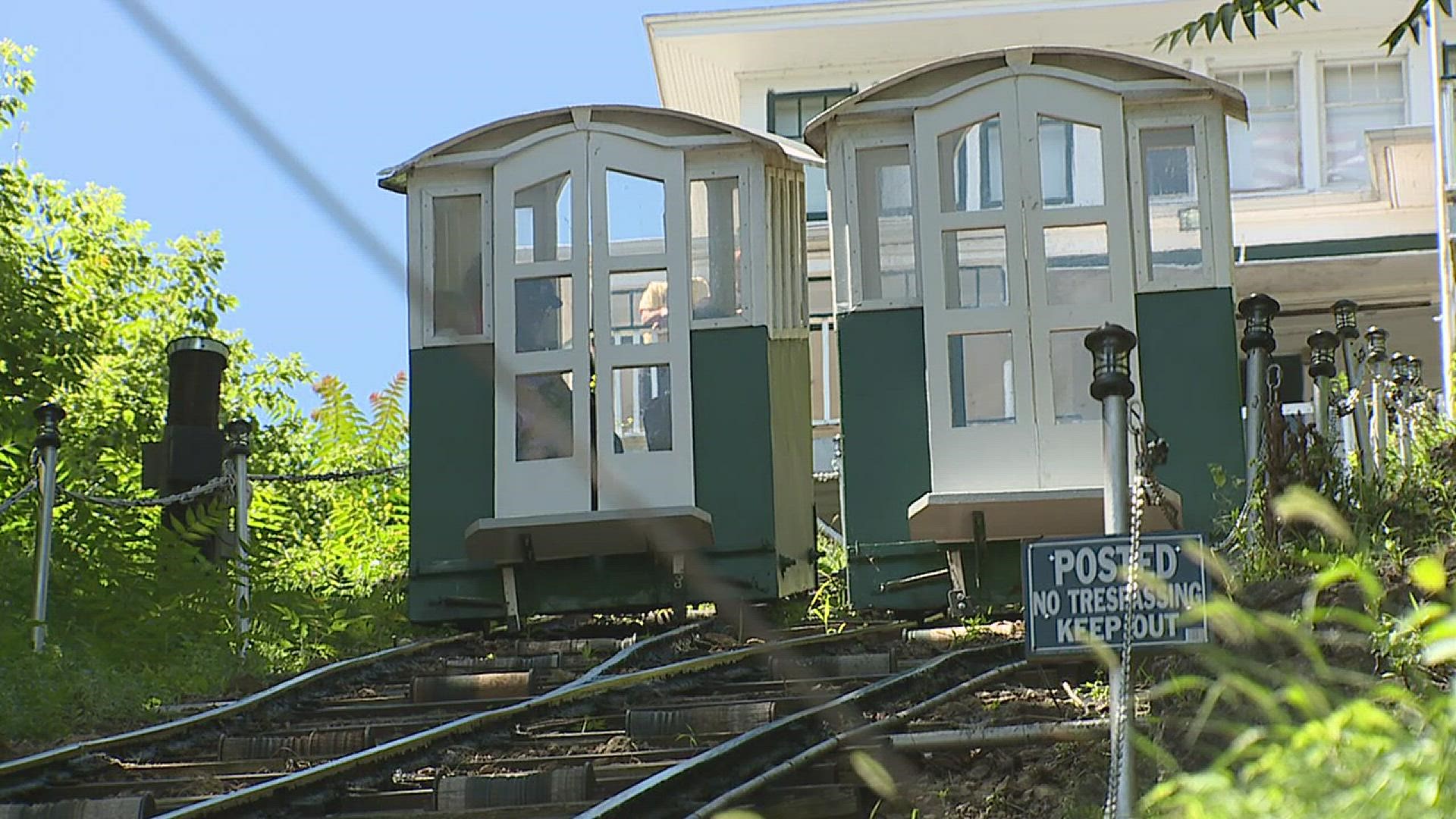DUBUQUE, Iowa — Dubuque is the oldest city in the state of Iowa, nestled along the limestone bluffs of the Mississippi River. Located about an hour north of the Quad Cities, News 8 explored three spots to take in the scenic views.
Eagle Point Park
Situated on the north side of town, this popular park welcomes more than 240,000 visitors every year.
Eagle Point Park is a 164-acre park owned by the city and was founded in 1908.
This park is known for its overlook that offers a sweeping vista of the Mississippi River coming down from the north.
The overlook is a great place to see barges locking through Lock and Dam 11.
"There you really get a good view of the Mississippi as it continues northward, up into Wisconsin, and there also once again, the lock and dam, you're literally right there, " Keith Rahe, president and CEO of Travel Dubuque, said.
Other park features include buildings in the style of famed architect Frank Lloyd Wright and a fish pond stocked with koi and waterfall features.
And it only costs $1 per car or $5 per bus to check it all out! Bicycles and pedestrians are free. The park is open 7 a.m. to 10 p.m., Sunday through Thursday and 7 a.m. to 11 p.m., Friday and Saturday, from the first Saturday in May through the fourth Sunday in October.
"It's just absolutely amazing. But everything that's created up there is gorgeous, and it's very much a park that we're very proud of," Rahe said.
Fenelon Place Elevator
A few miles south into downtown Dubuque sits our next attraction. And this one you can ride!
The Fenelon Place Elevator is a historic cable car elevator.
It is a funicular system that has been called one of the world’s steepest, shortest scenic railways. A funicular is defined as a "type of cable railway system that connects points along a railway track laid on a steep slope."
The elevator's track is 296 feet long and sits at a 41-degree angle. It started operating for the first time in 1882.
It was commissioned by a banker who wasted too much of his lunch break driving his horse and buggy around and up the hill.
"People were like, 'well, we would pay you to be able to ride it to cut down our time also.' So that's how it got created and started and still continues to this day," Rahe said.
It opened to the public in 1884 for 5-cent rides.
The current cable cars were built in 1977. Rates now start at $1 for children and $2 for adults for a one-way trip. Children under age 5 are free. A bicycle and its rider are $3 one way.
Fenelon Place, also known as the Fourth Street Elevator, was listed on the National Register of Historic Places in 1978.
The vista offered here is more urban with views into downtown Dubuque.
It also offers a great perspective of the tri-state area of Iowa, Illinois and Wisconsin.
"You can look up and down the river, you know, yeah, absolutely beautiful, you know, majestic scenery that we enjoy here. And looking into Illinois, looking into Wisconsin, and it's just absolutely amazing, very vibrant," Rahe said.
Mines of Spain
Further downstream, we find the origins of Dubuque.
The Mines of Spain State Park is a massive 1,400+ acre recreation area, with 15 miles of developed hiking trails.
The land’s earliest inhabitants were the Meskwaki Tribe. The first credited European explorer Julien Dubuque settled in 1788.
“He's created a friendship, partnership with them, and started to mine the ore and such. So that's really how the community of Dubuque got started," Rahe said.
Julien Dubuque was given permission from the Spanish landowners to work the land for lead mining.
"At that time this area was owned by Spain, in order for him to get a license to mine. He applied to the Spanish governor in New Orleans, and that's why he called it Mines of Spain,” Rahe explained.
Julien Dubuque is buried on the bluffs where he worked and his grave was marked with a monument in 1897.
“The Meskwaki Indians thought so highly of him. They buried him on a bluff overlooking the river, and he's still there. In the late 1800s, the city of Dubuque built a monument around him. That's the Julian Dubuque Monument. It's absolutely gorgeous," Rahe said.
The monument became a National Historic Landmark in 1993.
From that viewpoint, you can imagine what Julien Dubuque may have seen when he first came to the area.
"We still have this beautiful upper Mississippi River Valley here with the majestic bluffs and all the topography...the wildlife, the luscious, all the trees and hillsides, it would be pretty close, but you know, not quite the same," Rahe said.
Three different spots with three different views, all beautiful.
"You're up at a height that you can really take in the whole breathtaking scenery of the Mississippi River Valley," Rahe said.

